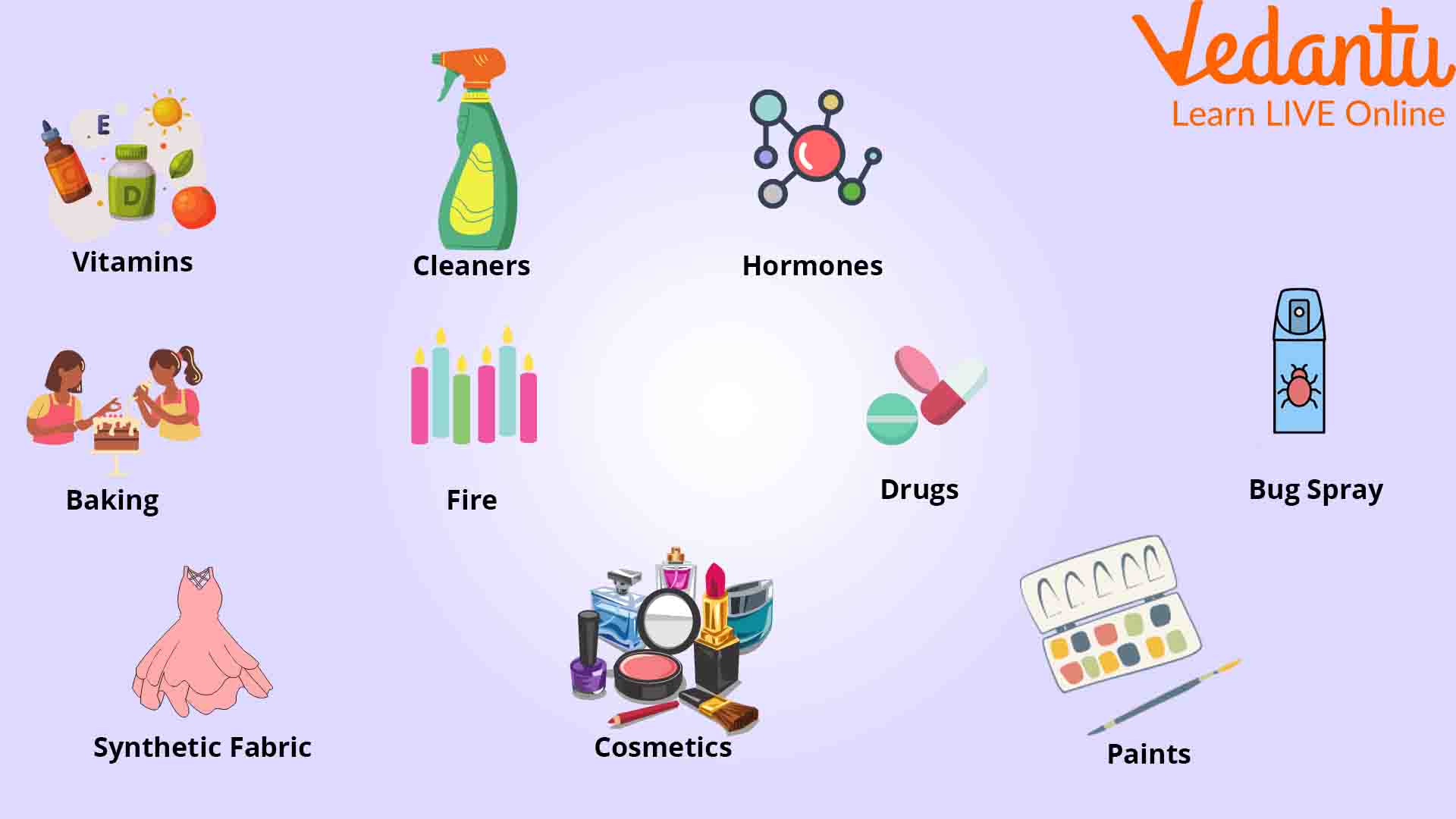List Of Wonders Of Chemistry In Everyday Life
Introduction
The word Chemistry makes us think of Chemicals, beakers, test tubes, burners, and an evil scientist working on a power potion! Jokes apart, we are surrounded by the magic of Chemistry. We use so many things daily which are the contribution of this subject to make our life better and easier. There is Chemistry in everyday life.
The wonders of Chemistry are in the brilliant chemical reactions that happen in the human body. Its wonders lie in the air we breathe and the food we eat. There is chemistry everywhere. Let us find out some of the things related to this subject that often go unnoticed.
List of Examples of Applications of Chemistry in Everyday life
1. The Composition of the Human Body
Our body is made of millions of compounds. We don’t even know them all. All these chemical compounds are a combination of a few constituent elements such as carbon, hydrogen, nitrogen, oxygen, calcium, phosphorus, sulfur, etc.
The variation in combination creates different formulas. These compounds get set to form something very important. Remember each type of compound we find in our body has a purpose. Whether it is constructing the cell membrane or the formation of hemoglobin, we find chemistry in every micrometer of the human body.
2. Emotional Chemistry
No, this is not about chemistry that makes you emotional. There are biochemical compounds that control your mood. Take this Chemistry in everyday life notes. The emotions a human feels depend on the hormones his brain releases. Every human makes happy and sad hormones that maintain balance.
In fact, your body shows stress due to the accumulation of certain compounds called cortisols. You feel happy when your body releases endorphins, dopamine, serotonin, and oxytocin. These are biochemical messengers that control your emotions and mood.
3. The Food You Eat
The bread you eat is fluffier and softer than before. Cereals, fruits, fish, chicken, and other staple food you eat need proper condiments and ingredients. All these ingredients are prepared following various chemical processes. This is one of the best facts that prove how Chemistry is used in daily life.
Moreover, the food we eat is all based on the plants making food from photosynthesis. It is the base of all ecosystems. They are the producers that know how to harness solar energy to make food with carbon dioxide and water. The rest of the food chain depends on it.
4. Hygiene
What do you do when you enter your home after winning a game on the field? You wash your hands and legs with soap. Doctors recommend using sanitizers before we eat outside. Well, there is chemistry in hygiene.
The formation of soap takes place through the process of saponification. The soap molecules form micelles in water that can grab the dirt and loosen it from the surface. So, when you wash your hands or clothes, the same thing happens. Dirt can be easily cleaned due to such a chemical reaction.
When you apply sanitizer, the alcohol present in it will dissolve all the germs and microbes present in your hands. It vigorously reacts with the cellular components and destroys microbial life without leaving a trace. Your hands become clean.
5. Shedding Tears when with Onions
You might have seen people crying while cutting onions. No, they don’t feel sorry for the onions but rather experience a chemical reaction that makes their eyes watery.
There is a wonderful chemistry mystery waiting to unravel. When you slice an onion, sulphenic acid is formed from the amino acid sulphoxide compounds present in it. This acid produces a volatile gas called propanediol s-oxide. It causes our eyes to shed tears by stimulating the tear glands.

Chemistry in Our Daily Lives
Read Also: Kitchen Chemistry: The Chemical Reactions while Cooking
7 Cool Chemistry Experiments to Surprise All
6. Baking Chemistry
How do you like your bread? Fluffy and soft? Yes! When you add baking soda to the dough, it makes the baking process easier and the bread as soft as cushions. Baking soda is nothing but a salt named sodium bicarbonate (NaHCO3).
This salt breaks down to release carbon dioxide and causes the food to rise. This process is called chemical leavening. It is also used in making idlis, dosas, dhokla, etc.
7. Preservation of Food
You might have heard the saying the older the pickle the better it tastes. Have you ever wondered why some foods do not need any preservation techniques? For instance, original honey is self-preservative. You will be surprised to know that the oldest sample of honey found is 3000 years old in a tomb in Egypt. It was still edible and did not cause any harm.
This is one of the best science in everyday life examples. Pickles and honey do not need preservation as they have natural chemical compounds that do not let microbes grow. We also use chemical preservatives in packaged food to increase its shelf life.
8. Rusting
Well, Chemistry is not always helpful. For instance, industries suffer huge losses all the time due to rusting. It is a chemical reaction that eats iron. Rust is a brown unusable substance formed on iron instruments and infrastructure when iron reacts with oxygen in presence of water vapor.
The prevention of rusting is also a brilliant solution developed using chemical science. We use antirust paint to cover the iron parts and to stop rust from progressing. We also use certain alloys that do not form rust.
You can now easily make a Chemistry in everyday life chart and display it to the class!
Importance of Chemistry in Everyday Life
From the above examples, you can now easily write down the science in everyday life essays. We have just touched the tip whereas the iceberg remains under the water. The contribution of chemistry to our lives is undeniable. If you observe carefully, you will find more examples around you.







